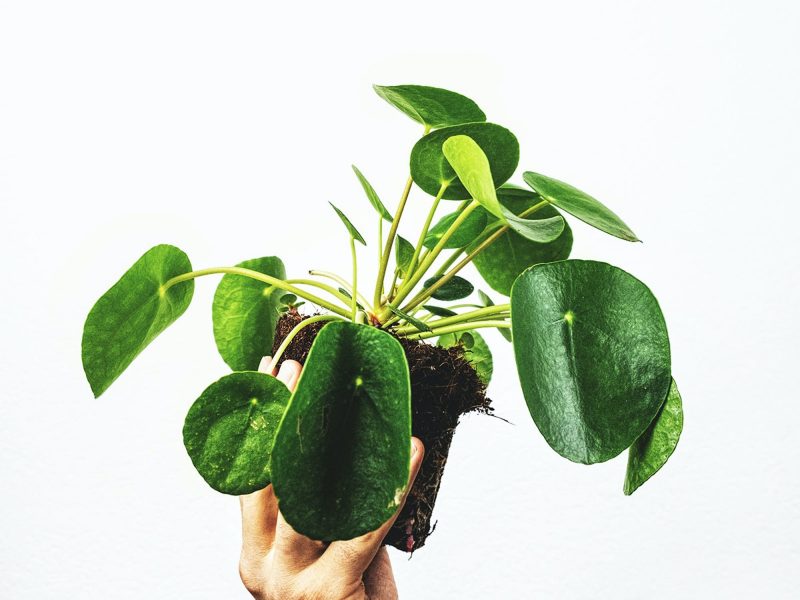
We have been there too – that dreaded moment when you realise that your Pilea has started to develop brown leaves. It can be pretty annoying if you have really tried super hard to care for your Pilea and are now worried that it is dying a slow death. However, don’t fear as if you have caught the problem early, will a little TLC you should be able to get your Pilea back to full health, with no brown leaves in sight.
Below we have outlined the 3 most common causes of brown leaves on a Pilea plant. We recommend going through the issues one by one eliminating them as you go before making any changes to your care routine or your Pilea’s environment.
Overwatering can cause brown leaves
Let’s start with the most common reason first – too much water. Although your Pilea doesn’t like to have really dry soil, over time consistent overwatering will lead to root rot. This means that the plant isn’t able to get all the nutrients it needs and becomes unstable, droopy and the leaves will begin to turn brown. If the leaves on your Pilea start to develop brown spots and the edges become brown too, then overwatering is most often the cause.
To figure out if overwatering is definitely the cause of your Pilea’s brown leaves, check the moisture levels in the soil. If you find the potting mix is waterlogged and clumpy then replace it with fresh dry mix straight away rather than letting it dry naturally. This means the plant can start to recover and prevents any further stress on the roots.
It is best to trim off the damaged roots so that your Pilea can focus on new healthy growth rather than wasting energy trying to revive the dying roots. Your Pilea may take a few weeks to get back to regular health and green growth because the root system has been damaged. Be patient though as after a while your Pilea will recover.
Top tip: waterlogged soil can give off a damp, musty smell so get up close to your Pilea and other houseplants every once in a while as it’s a super easy way to check if something seems wrong.
Brown leaves can indicate over-fertilisation
Another cause of brown Pilea leaves is too much fertiliser/ plant food. We recommend fertilising your Pilea with a water-soluble feed, making sure that you dilute it more than it says on the bottle. You should be fertilising your Pilea once a month during spring and summer and not at all during the colder darker months. This is because during winter your Pilea will go dormant and won’t be producing any new growth.
If you are fertilising more often than this, or at the full recommended strength, then this may be causing your Pilea to develop brown leaves. If you think this is the case then replace the potting mix and hold off on the fertiliser for a few months (and reduce it when you do reintroduce plant feed). The other alternative is to not fertilise your Pilea at all. We don’t always and it doesn’t do any harm. It’s kind of an added extra sometimes.
Pests can result in brown spots
Another rarer cause of brown Pilea leaves is a pest infestation. Insects such as mealybugs or spider mites can take hold of the plant and suck on their nutrients. This will cause the leaves to turn brown and sometimes develop small holes. Over time, these damaged leaves will also fall off the plant.
Use a magnifying glass to try and spot the pests on the plant. They like to hang out on the undersides of leaves or near the leaf and stem joints so look closely there.
You can find out more about how to identify, treat and prevent all the types of houseplant pests in our downloadable ebook.
Brown leaves may just be natural ageing
If your Pilea isn’t getting too many brown leaves, maybe 1 every few months then this may just be down to natural ageing. It’s totally normal for your Pilea to lose some of its oldest lowest leaves as it focuses on producing new bigger growth higher up on the plant.
The best thing to do in this case is to keep an eye on how many leaves are turning brown and falling off the plant. If the rate stays very low then it probably isn’t anything to worry about.
These are the most common reasons why your Pilea may have brown leaves. If you want to find out more about Pilea care or other common problems then check out our Pilea Care Guide.














